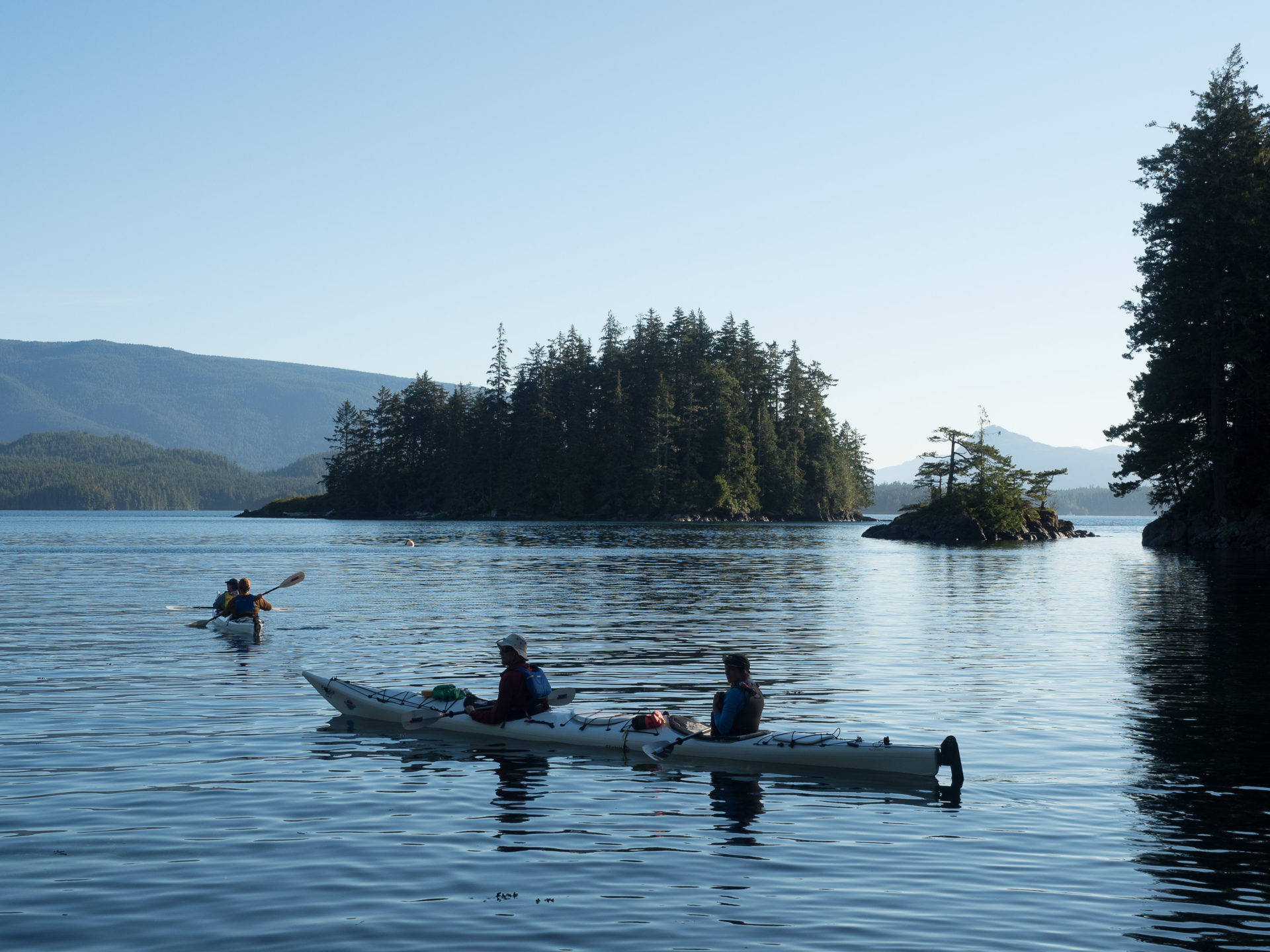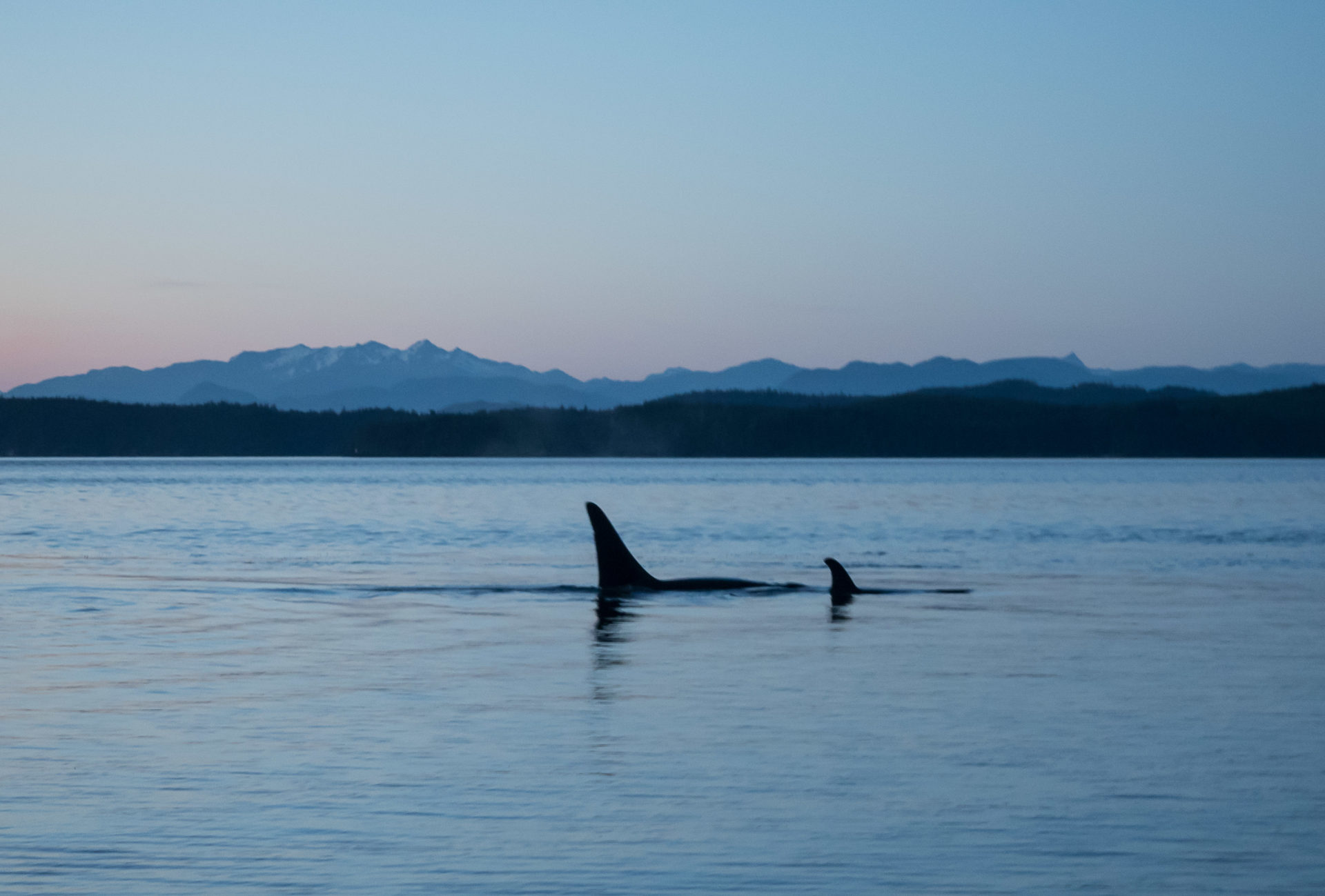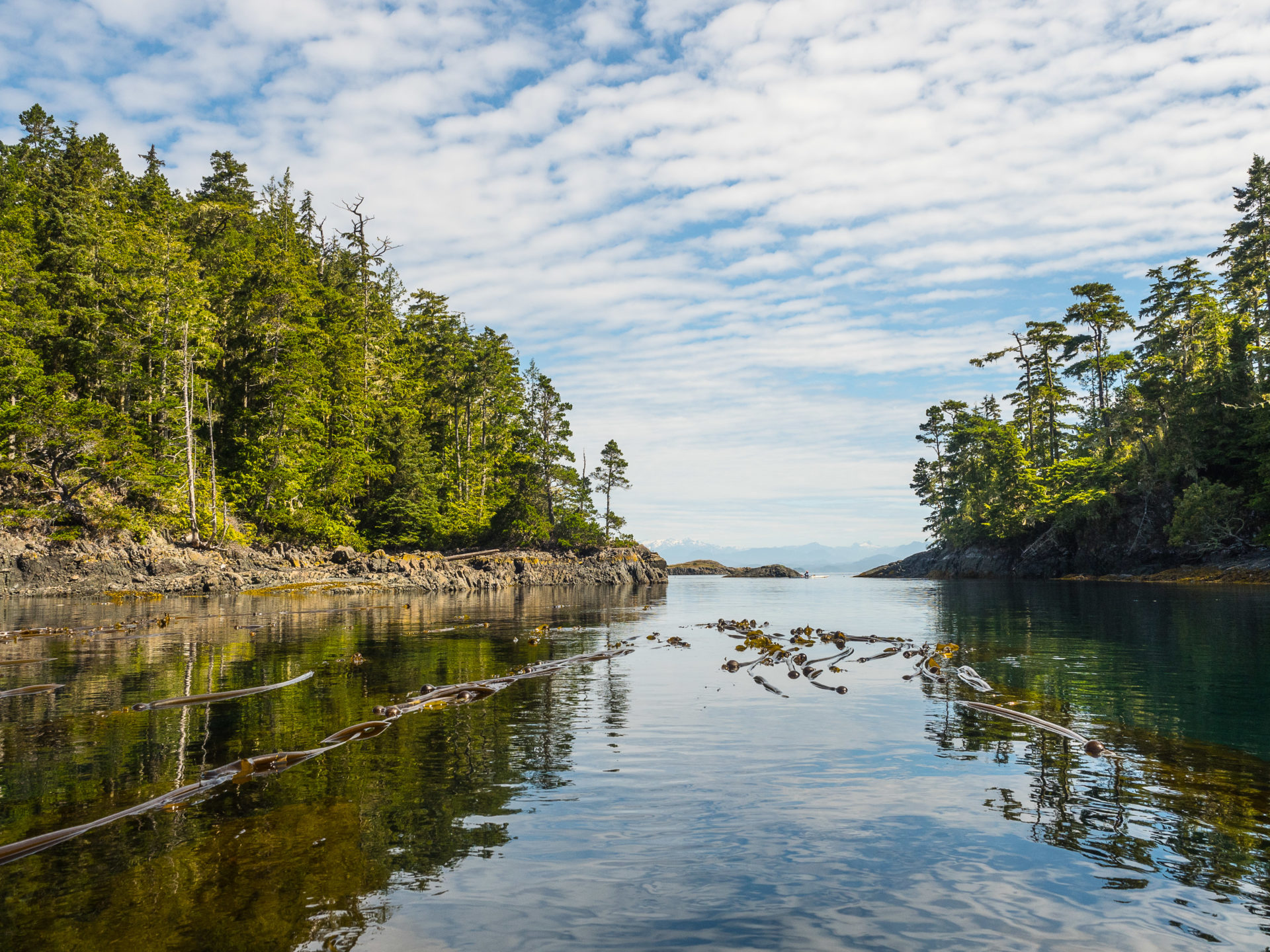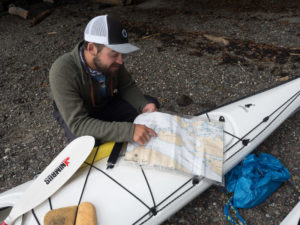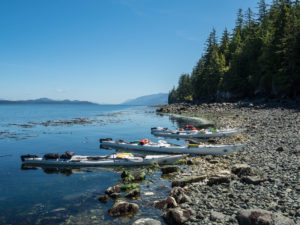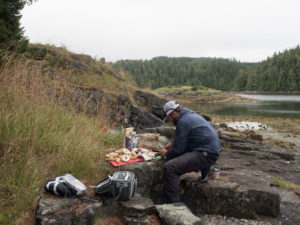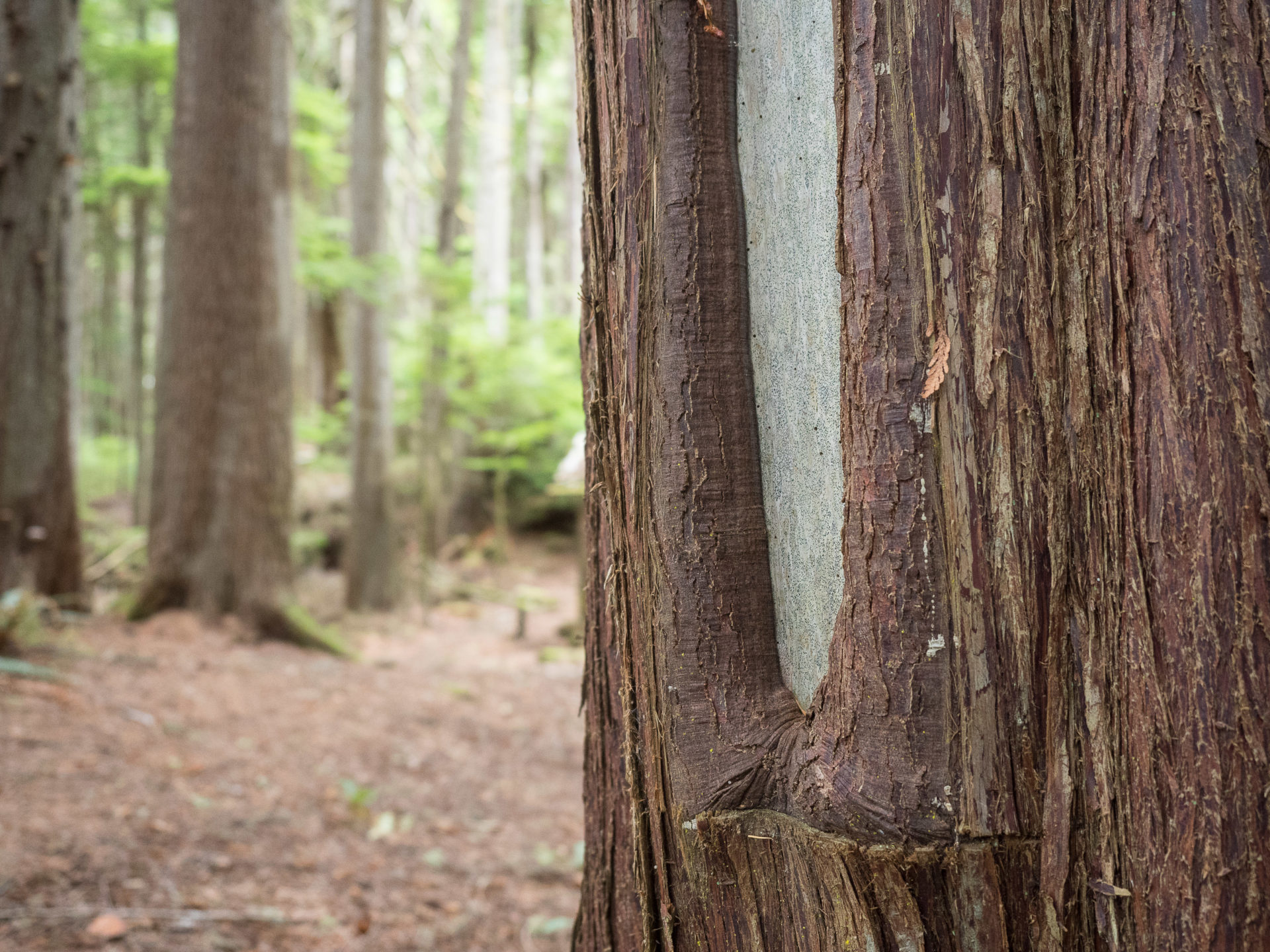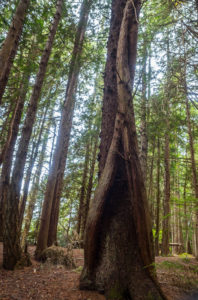The sound of orcas exhaling echoed across Johnstone Strait. Gradually out of the sunset glow the dorsal fins appeared: the males’ upright and as tall a man, the females’ smaller with a gentle curve.
Before we set off from Bauza Cove (near Telegraph Cove), our guides Joshua Ariano and Alicia Mildner from At the Water’s Edge Adventures (AWE Adventures) gave us a full orientation to our gear and also told us that whales weren’t a guarantee on our five-day wilderness kayaking trip—but that there would still be lots to see and experience.
The whales had their own ideas though, and on our first night out, while we were camping at Kaikash Creek Recreation Site, a group of five or six Northern Residents ended up just metres off the shore, rubbing their bellies in the darkening night.
The traditional territories of the ‘Namgis, Mamalilikulla, and Kwikwasut’inuxw Haxwa’mis people are magical in normal times, but as we paddled deeper into the region I began to realize what a unique experience this summer offers. As Josh and Alicia went over the charts and prepared us for crossing Johnstone Strait on our second morning out, we were warned to keep our boats close together—that powerboats plying the area jokingly(?!) refer to kayaks as “speed bumps.”
But as we made our way across the Strait, no other boats appeared. On the horizon all we saw were more whales. The region—which is usually busy with cruise ships and international sport fishing tourists was extraordinarily quiet.
While researching where to go and what to do this summer, I discovered that guided wilderness kayaking in the time of COVID-19 is a great option. By focusing on families and groups who are already in the same bubble, companies like AWE Adventures are able to meet health guidelines and keep the risk low. Then, by adding a few new hygiene measures (you’ll be washing your own dishes and responsible for your own gear), the outdoor adventures offer unparalleled access to the wilderness.
Kayaking the peaceful waterways turned out to offer the kind steady meditative activity my pandemic-frayed nerves were craving. Rhythmically dipping my paddle into the calm sea took my kayaking partner and me across Johnstone Strait to Red Point on Harbledown Island. Here, I spent part of our lunch stop searching for fossils.
Meditative peace gave way to a child-like joy as I hopped from rock to rock searching for the ancient stripy and swirly fossils (more correctly known as trilobites and ammonites). My searching continued when we reached our campsite at Freshwater Bay on Swanson Island. Here though, when I sifted through the beach pebbles, it was shards of obsidian that offered me a portal into the past.
Grease Trails were once the way that First Nations cultures traveled when trading goods between the coast and inland. Named for the eulachon oil that was carried along the well-trodden paths and traded for furs, copper and obsidian—the shards I found were a direct link to this rich history.
The region we kayaked in straddles a few different eco zones. Blackney Passage and Blackfish Sound are relatively open areas filled with nutrient rich currents and the excitement of humpbacks, orcas and sea lions. But for me, it was the smaller more winding passages through the traditional territory of the Mamalilikulla and Namgis people that were most captivating.
The narrow passages found at the edge of the Broughtons unfolded almost like stories. Just like the way the obsidian shards told me that someone once sat on the beach where I sat—working pieces of obsidian which had likely traded hands many times on a trade journey from somewhere in the interior; a pictograph showed us where chiefs once bathed; while clam gardens and culturally modified trees showed us where villages once stood.
Over our five days out on the water I found myself relaxing and immersing in the rich story that long predates our province. Populated by sophisticated cultures, bald eagles, marbled and ancient murrelets, dall’s porpoises and even barnacles that glowed at night with bioluminescence, the story reminded me what a beautiful and ancient place this land is.
And as whales breathed deeps sighs through the nights and the moon shone brightly, it made this current complex moment in history feel smaller and more manageable. Paddling was a simple reminder that even at times when the world feels most off-kilter, reconnecting with the land around us can offer peace and healing.
If You Go:
Telegraph Cove is roughly a four hour drive north from Nanaimo—and can be reached from Vancouver in an easy day trip.
Telegraph Cove Resort offers a variety of lodging (for the night before or after kayaking) as well as dining. There’s a handy shower and laundry facility for use after your trip.
– Bring and wear a face covering when you cannot maintain proper physical distancing. You’ll also want your mask for fueling stops or grocery pickups.
– Stay in your car if you are travelling by vehicle
– Limited grab+go food options (so grab in cafeteria and take back to your car or outer deck to enjoy)
– Practice physical distancing (decals on seats to advise where to sit, etc.)
